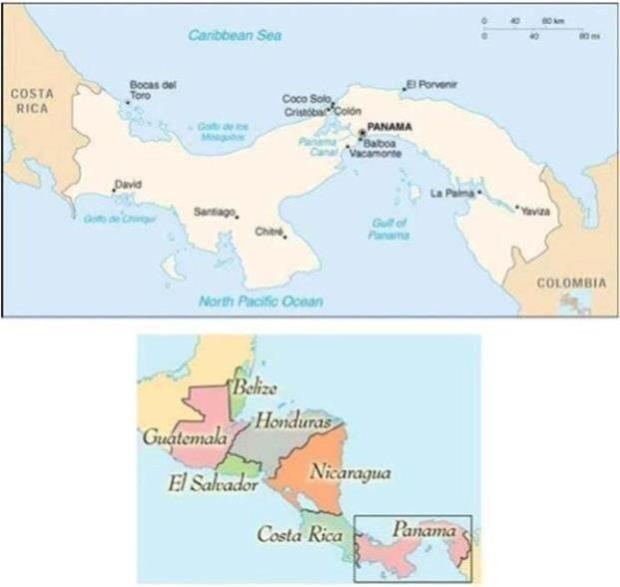In 2023, Panama registered an estimated overall deficit of U.S.$629.9 million, compared to an overall deficit of U.S$1,879.5 million in 2022, mainly due to an increase in portfolio investment. In 2022, Panama registered an estimated overall deficit of U.S.$1,879.5 million, compared to an overall deficit of U.S$2,491.6 million in 2021, mainly due to an increase in portfolio investment. In 2021, Panama registered an estimated overall deficit of U.S.$2,491.6 million, compared to an overall surplus of U.S$4,724.6 million in 2020, mainly due to a decrease in other capital assets and a decrease in portfolio investment. In 2020, Panama registered an overall surplus of U.S.$4,724.6 million, compared to an overall surplus of U.S.$1,958.3 million in 2019, mainly due to an increase in other capital assets and a lower value of imports. In 2019, Panama registered an overall surplus of U.S.$1,958.3 million, compared to an overall deficit of U.S.$455.2 million in 2018, mainly due to an increase in portfolio investment.
In 2023, the current account balance recorded a deficit of U.S.$3,738.7 million, an increase in the deficit of 686.8% compared to a current account deficit of U.S.$475.1 million in 2022. This was primarily due to a 76.0% increase in current revenues to U.S.$3,768.0 million in 2023 compared to U.S.$2,140.6 million in 2022. In 2022, the current account balance recorded a deficit of U.S.$475.1 million, a decrease in the deficit of 39.0% compared to a current account deficit of U.S.$778.8 million in 2021. This was primarily due to a 33.6% increase in the value of imports to U.S.$27,149.8 million in 2022 compared to U.S.$20,323.1 million in 2021. In 2021, the current account balance recorded a deficit of U.S.$ 778.8 million, an increase in the deficit of 311.4% compared to a current account deficit of U.S.$189.3 million in 2020. This was primarily due to a 41.1% an increase in the value of imports to U.S.$20,323.1 million in 2021 compared to U.S.$14,406.7 million in 2020. In 2020, the current account balance recorded a deficit of U.S.$189.3 million, a decrease in the deficit of 94.3% compared to a current account deficit of U.S.$3,329.3 million for 2019. This was primarily due to a 35.3% decrease in the value of imports to U.S.$14,406.7 million for 2020, compared to U.S.$22,259.0 million during 2019. In 2019, the current account balance recorded a deficit of U.S.$3,329.3 million, a decrease of 37.8% compared to a current account deficit of U.S.$5,355.1 million for 2018. This was primarily due to a 7.1% decrease in the value of imports to U.S.$22,259.0 million for 2019, compared to U.S.$23,968.8 million during 2018.
For 2023, the capital and financial account balance recorded a surplus of U.S.$1,621.3 million, a decrease of 65.7% compared to a capital and financial account surplus of U.S.$4,728.7 million in 2022, mainly due to the decrease in other investments, specifically, the decrease in loans. For 2022, the capital and financial account balance recorded a surplus of U.S.$4,728.7 million, an increase of 364.1% compared to a capital and financial account deficit of U.S.$1,790.6 million in 2021, mainly due to the increase in the value of direct investment, principally in wholesale and retail trade. For 2021, the capital and financial account balance recorded a deficit of U.S.$1,790.6 million, a decrease of 126.7% compared to a capital and financial account surplus of U.S.$4,153.4 million in 2020, mainly due to the increase in the value of direct investment, principally in wholesale and retail trade. For 2020, the capital and financial account balance recorded a surplus of U.S.$4,153.4 million, a decrease of 38.0% compared to a capital and financial account surplus of U.S.$6,699.6 million in 2019. For 2019, the capital and financial account balance recorded a surplus of U.S.$6,699.6 million, an increase of 13.0% compared to a capital and financial account surplus of U.S.$5,926.5 million for 2018.
In 2023, foreign direct investment as calculated by the Instituto Nacional de Estadísticas y Censo de Panamá (“INEC”) recorded net inflows of U.S.$1,541.0 million, a decrease of 46.3% compared to net inflows of U.S.$2,871.8 million in 2022. In 2023, foreign portfolio investment recorded net inflows of U.S.$471.0 million, compared to net inflows of U.S.$3,194.8 million in 2022. In 2023, other capital recorded net outflows of U.S.$399.9 million, compared to net outflows of U.S.$1,346.7 million in 2022.
In reviewing Panamanian balance of payments statistics for merchandise imports and exports, it is important to consider the effect of the Colon Free Trade Zone (CFZ) and the significant amount of merchandise passing through it. In 2023, Panama had U.S.$13,195.3 million in non-CFZ merchandise imports, a decrease of 2.2% from U.S.$13,491.0 million during 2022. Imports to the CFZ for 2023 were U.S.$19,757.5 million, a 41.1% increase from U.S.$14,006.0 million for 2022. In 2023, non-CFZ merchandise exports totaled an estimated U.S.$3,367.5 million, a 6.6% decrease compared to U.S.$3,604.5 million for 2022. CFZ re-exports for 2023 were estimated to be U.S.$13,371.3 million, a 15.0% increase from U.S.$11,623.6 million for 2022. In 2022, Panama had U.S.$13,491.0 million in non-CFZ merchandise imports, an increase of 30.7% from U.S.$10,318.8 million during 2021. Imports to the CFZ for 2022 were U.S.$14,006.0 million, a 55.1% increase from U.S.$9,031.2 million for 2021. In 2022, non-CFZ merchandise exports totaled an estimated U.S.$3,604.5 million, a 1.1% decrease compared to U.S.$3,646.3 million for 2021. CFZ re-exports for 2022 were estimated to be U.S.$11,623.6 million, a 21.4% increase from U.S.$9,572.9 million for 2021.
D-100

